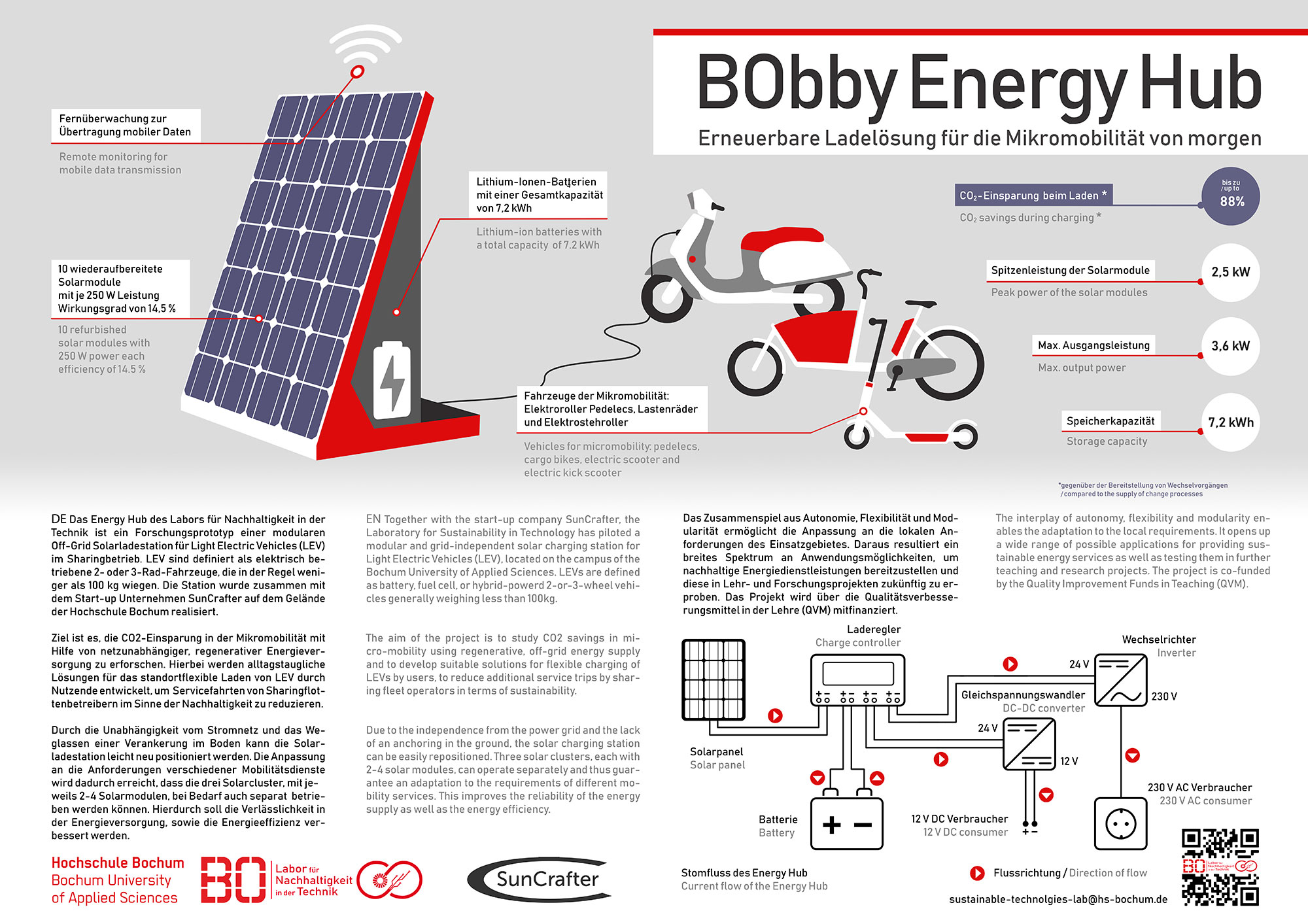What’s the Good Practice about?
The Good Practice is part of the project study Bobby Sharing. We search for more sustainable solutions for Light Electric Vehicles (LEV) in shared use in urban areas as an alternative to fossil-fueled individual mobility. Especially in dense areas like the Ruhr area there is a great need for space efficient and environmentally friendly mobility concepts with respect to the climate crisis and the available space in cities. The EnergyHub has been designed with these factors in mind using second-life PV-Panels to provide renewable energy for charging LEVs. Its design is modular, the internal components are easily accessible and it’s easy to work on and extend as a tool for practical education.
Main activities are the cooperation with local companies (to get second-life solar panels, to get help with the construction as well as the the internal design of the system), the negotiations with Bochum University of Applied Sciences about requirements of space, position and feasibility, setting up of external devices and establishing social media and marketing activities of the project.
Why implementing the Good Practice? What are the special features of the Good Practice?
Students learn technical skills (such as programming, electrical engineering, solar related knowledge), design skills (arrangement of parts inside and outside of the EnergyHub) and practical skills (hands-on experience when repairing or replacing parts). Moreover, there is a lot of research implied, by which students learn about grid independent charging solutions for LEVs, the pros and cons of decentralized energy systems and the feasibility of different solutions under different conditions. Also, LCAs are conducted by the students to measure the environmental impact of the EnergyHub.
The practice can be implemented in another region if there is sufficient sunlight in spring, summer and fall season. Furthermore, adjustments of the angle of the PV-panels should be made according to the latitude of the region. It is possible to build and test this practice in small areas such as the campus of Bochum University of Applied Sciences.
What are the challenges in implementing the Good Practice?
What’s the key to success?
Most challenges are technical, for example dealing with (cold) temperatures (since the system is vulnerable to temperatures below 0 °C and most batteries cannot be charged depending on their type), high usage scenarios and the establishment of different charging solutions. A lack of sunshine can cause difficulties in getting sufficient energy. Another challenge was the lack of capacities when it comes to technical skilled people who keep this project running and do maintenance, as they need to be available also in semester breaks. Since we work with batteries appropriate handling is required to ensure safe operations. There is the possibility of disagreement by other people working on the campus (especially when it comes to visual elements). Social acceptance was also a factor because of the need to replace existing parking spaces for cars.
Main key to success is the reliable and intensive use of the EnergyHub.


